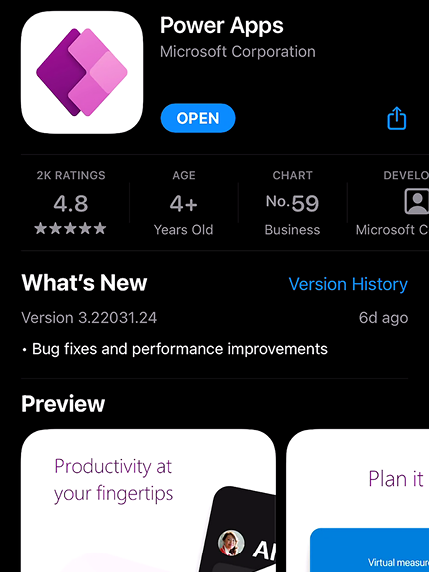The app creation process
In order to create an app from SharePoint, we first of all need to create the data structure. The process we are about to follow applies to SharePoint lists, therefore we must begin by creating our basic data structure.
In order to create an app from SharePoint, we first of all need to create the data structure. The process we are about to follow applies to SharePoint lists, therefore we must begin by creating our basic data structure.
In this lab, we are going to create a list within Microsoft SharePoint, and then generate an app to replace the list form. In this list form app, we are going to communicate to the user that we want them to use the canvas app that we are going to continue building throughout this book.
Within this chapter, we have explored the close relationship between SharePoint and Power Apps, and how Power Apps can greatly enhance the way that you work with data. First of all, we explored how we can create an app directly from SharePoint, which is different from how we created apps in previous chapters, either from scratch or from a template. This is especially useful if you are concentrating on getting your underlying data correct first before starting to develop the app itself. Just remember that not all of the data types within SharePoint will map automatically into your Power Apps form, so complex data types such as Managed Metadata or new data types such as Location will be created but will be read-only.
When generating apps from SharePoint, also keep in mind that it will generate an app based on the mobile canvas, so if you need a tablet canvas, then you’ll need to create that from blank and select SharePoint as the data source.
We also looked at how we can...
Microsoft Teams is the central collaboration hub for users. It is cited as being the fastest growing product, in terms of user adoption, of all of the Microsoft products throughout its history.
For Microsoft 365, Microsoft Teams provides a window to all of the productivity tools that your users need; therefore, it makes sense for you to allow your users to interact with your Power App without ever leaving Teams. This can now be achieved in two ways, firstly by adding your app as a tab in a channel, but also by adding an app to the rail on the left side of the screen.
As a brief introduction to Microsoft Teams, collaborative areas are broken down into high-level areas called Teams. Behind the scenes, Microsoft Teams creates a SharePoint site and an exchange mailbox to provide the key collaboration and communication tools that have made Microsoft Teams so successful. These teams are then broken down into sub-areas called channels,...
One of the biggest drivers for the adoption of Power Apps within organizations is the ability to create mobile apps without the need to pay large development fees. Power Apps, much like other areas of Microsoft 365, has its own dedicated app, which can be downloaded from the relevant app store. Both iOS and Android devices are fully supported, meaning that the reach your app can have can be vast.
The screenshots in this section have been taken using an iOS device:

Figure 4.20: A Power Apps app that has been installed on a mobile device
Once the app has been installed on your device, you can immediately start to use it by launching it from your home screen.
When you first launch the Power Apps app, you will be asked to authenticate using the Microsoft 365 credentials that you normally use within the browser. There are a lot of similarities in the user experience between what we saw in Microsoft Teams and what we can see in...
Within this lab, we are going to install and configure the Power Apps mobile app so that we can experience using our Power App as we build it throughout this book. This lab assumes that you have completed Lab 1, and therefore have created the Groceries phone app.
However, you can follow these steps for any other app that you create. First, we will install the Power Apps app, and then we can refer to the above section to pin the Groceries app to the home screen.
Let’s install the mobile app.
This first activity will allow us to install and configure the Power Apps mobile app onto our chosen device. The screenshots in this lab have been taken from an iOS device:

Figure 4.25: Power Apps in search options
In this chapter, we looked at the version history and what that means for our Power App. We identified that we can happily work on our app in the draft stages without users being able to see our changes. Once the app has been published, it will be marked as Live and will be available for our users to start using. Should the worst-case scenario be realized and we have an error in our app, we can easily revert to a previous version by selecting Restore. The restored app will then become a new version, but won’t be visible to our users until we click Publish.
We also looked at the key ways in which our users can exploit the functionality that’s created using Power Apps. First, we focused on SharePoint, which uses a web part within the modern experience to embed the Power App onto the page. This is done by providing the web part with the app web link or ID, which are obtained from the app’s Details screen.
This experience may be due to the web part...
Join our community’s Discord space for discussion with the author and other readers:

 © 2023 Packt Publishing Limited All Rights Reserved
© 2023 Packt Publishing Limited All Rights Reserved